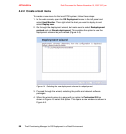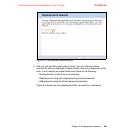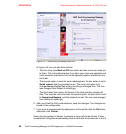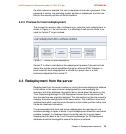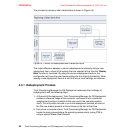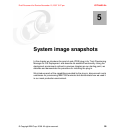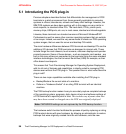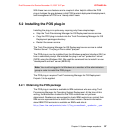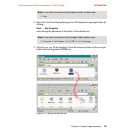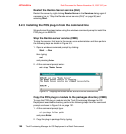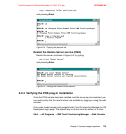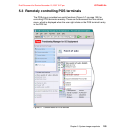
4372ch05.fm Draft Document for Review November 15, 2007 3:27 pm
96 Tivoli Provisioning Manager for OS Deployment in a Retail Environment
5.1 Introducing the POS plug-in
Previous chapters described factors that differentiate the management of POS
terminals in a retail environment from those generally applicable to computer
systems in offices, laboratories, schools and many other settings. However, the
IBM POS systems we have been working with in this paper are very similar in
most respects, to standard office PCs. The hard disks, CPUs, printer ports,
memory chips, USB ports, etc. are, in most cases, identical and interchangeable.
Likewise, these terminals run standard versions of Microsoft Windows
® XP
Professional as well as some other common operating systems that are outside
of our scope. Indeed, we used the very same media to create our POS operating
system images, that are used for server and desktop OS installs.
The main hardware differences between POS terminals and desktop PCs are the
additional I/O devices that POS terminals are designed to interact with. These
include things like cash drawers, touch screens, customer displays and operator
proximity sensors. Some of these devices - such as magnetic card readers - are
built-in but many others are connected to the terminals using the same standard
interface technologies, like the Universal Serial Bus (USB) for example, as their
office based counterparts.
This means that Tivoli Provisioning Manager for Operating System Deployment,
with its rich set of features and capabilities, is ideally suited to managing POS
devices even without the POS plug-in. The question then is: what value does the
plug-in add?
There are two major capabilities available after installing the POS plug-in.
Backup/Restore the current state of a machine.
Perform a “Hardware Switch” of an ailing POS terminal with an identical
machine.
The POS backup function makes it easy to accurately capture complete backups
of the operating system, programs, data, device drivers and software settings of
a POS terminal at a specific point in time.
This includes any dynamic data that
may have been created or changed since the POS was originally deployed.
The hardware switch function facilitates the process of quickly replacing an ailing
POS terminal device with new hardware, by allowing an administrator to restore
backups that were originally created from the old hardware, onto the new.
Note: CMOS/BIOS settings are not captured by the POS backup function.



